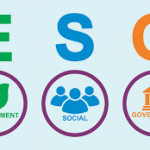Unlike my past interview subjects, Steve Schullo isn’t a retirement plan provider and only got involved with retirement plan issues when he learned how much he was paying in fees as a participant in a non-ERISA 40(b) plan while working as a Los Angeles public school teacher. Not only is he an advocate against high 403(b) fees, he’s also a pretty good investor too.
Q: Where were you a teacher and what subjects did you teach?
A: I taught and held a variety of positions at Los Angeles Unified School District for 24 years. I taught elementary, so we teach all the subjects, except for music, library skills and special education. I also worked on what we call out-of-the-classroom positions. I taught educational technology for six years coordinating a computer lab, and advising teachers and students at a middle school. I also taught part-time educational technology to student teachers at UCLA Extensions.
Q: How did you get involved with non-ERISA 403(b) issues?
A: From personal experience. My story is as old and current as the stories recently reported in the NY Times 403(b) series last fall. When I was a young teacher and knew nothing about retirement planning and investments, I was sold two fixed annuity products with hideous 18% surrender costs, and this practice continues without end in 2017! When I learned a little more about what I had, I asked my annuity agent to put me in a product that didn’t have a surrender fee. I found out five years later she blatantly ignored my request! I was so livid, I voted to write a book. This was happening everywhere and I wanted to warn my colleagues about these sharks that will do ANYTHING for a sale and that commission. My late husband, Dan who is also an educator, learned we had pathetically low performing insurance products. We paid the surrender fees (or took them out over five years while gaining no credit) and transferred our money to genuine growth investments—no load mutual funds.
Q: How many 403(b) plan providers did the LA Unified School district offer for teachers?
A: After the annuity products I contributing to no load mutual funds. LAUSD had 25 loaded mutual fund companies, 120 insurance companies, and a few no load mutual fund companies. A total of about 155 companies, I kid you not! I have another story that I will not tell here because it is so petty and immature. I experienced negative push-back when I had just trying to get a list of the no load mutual fund companies that were available to me on the district’s 403(b) list. I was treated like I was a threat to Western Civilization by LAUSD’s own benefits department. I did not understand why they were so afraid to give me a simple list of the 403(b) companies that were available.
Their fear motivated me to find out why. What were they so afraid of? What are they hiding?
Q: Teacher unions are known for being strong, but why is there no uproar over non-ERISA 403(b) issues?
A: It’s complicated. On one hand my national union wrote one of the best articles on the problem called “Shark Attack: Investors in 403(b) plans, beware: You are especially vulnerable to predators”
http://teachersadvocate.blogspot.com/2016/06/shark-attack.html. The author said everything we wanted said about these terrible products and how they are marketed and sold to vulnerable teachers. But AFT selected another insurance company for the national 403(b) plan, and got sued I believe.
But I present my opinion after thinking about why no 403b reform has happened in the last 20 years that I have been an advocate. I have tried talking and sometimes ending up fighting with some union leaders. There are some individual union leaders and members that understand the problem of excessive annuity sales, and have done exactly what I have done with their 403(b) and invested in low cost mutual funds. But as a policy, it has not happened. The default response is that it’s a “private decision between members and their agents.” Union leadership comes from the teacher ranks and thus reflect the culture and the values of the profession. Interestingly, my fight with the district is very similar with my fight with the unions. They are afraid to do anything because to do so means that they will be subjected to liability because they recommended some investment and the union member loses money. So, both the union and the district say very little to nothing about the 403(b). Historically, the entire public education profession focus on students’ best interest and not to be distracted by economic events outside the profession. As a culture, the values are on the students and not on teachers’ own economic progress, especially anything to do with capitalistic for-profit enterprise.
Over 70% of k-12 public educators rely on their pension plan for 100% of the future retirement needs. Many don’t realize however, that you have to work 35 or more years get 90% of salary covered by our pension plans.
Q: Do you think the New York Times articles about non-ERISA 403(b) plans a few months back will help in bringing the issue to the forefront?
A: This latest non-ERISA 403(b) article was impressive in its broad and profound report on just how low the shark industry will sell a product to ANYBODY, regardless of the financial circumstances. For instance, I thought the struggling teacher who had a disabled adult child to care for was a brilliant example of how far the aggressive 403(b) sales force will do to get that commission.
On the publicity side, perhaps some high-ranking district and union officials will be awaked once again that their union members and teachers are not protected. However, so far the print media publicity has not worked. Outside of the personal background stories of these those teachers featured in the NY Times articles, the 403(b) has been reported with over 30 newspaper articles since 1997. Also, Scott Simon, wrote about 5 or 6 articles in Morningstar Adviser. These reports all say the same thing over and over again, and yet little reform has been implemented.
Q: What work have you been able to accomplish as a member of the LAUSD investment advisory committee?
A: Lots! Lowering costs, changing from active management funds to passive, and requiring cost transparency in all presentations. As a result we won a “Plan Design” award given to us by the National Association of Government Defined Contribution Administrators in 2014. It took ten years of cleaning up the original investment choices rammed down our throats by Mercer Consultants and their hidden revenue sharing costs. When the committee selected a fiduciary minded consultant, we began taking removing those high cost investments and replacing them with Vanguard and BlackRock low cost index funds. Our committee was four years ahead of the Dodd/Frank when we demanded that our TPA disclose all costs, including the industry’s sacred cow, the revenue sharing.
Q: You and your late husband made a killing in the market during the tech bubble. How did the two of you make it back after it burst?
A: Also during that time, I was diagnosed with colon cancer, so we had a lot on our plate. This is what we did to get through that terrible financial time:
- We did not blame one another
- We did NOT panic, sell out and never get back into the market again
- We stayed with our overly aggressive and technology loaded sector portfolio until the market recovered in 2004.
- We found out about two basic mistakes—investing in one sector and no bonds. For investors in their middle 50s and early 60s we were way too aggressive.
- We learned about the core asset classes (small, mid, large, international and bonds) and proper allocation of bonds in a portfolio (according to age or when we needed the money)
- We learned about rebalancing.
- From the Vanguard website, we selected a 30% stock/70% bond stock bond split would return 7.3% which was appropriate for us.
- Began revising our portfolio in 2004 when the market recovered and sold all individual stocks
- For two years, we slowly began to transfer our money into passive investing with low cost Vanguard and TIAA CREF
- By 2008, we had our portfolio set up for the rest of our lives, not anticipating any disaster.
- I retired in 2008 and we had sold our real estate properties just before the crash and moved to the desert with plenty of retirement money to supplement my teachers pension. I just turned 61 and Dan was 67.
- In 2008, our portfolio worked as designed as we lost only 11.8%.
- Since 2008 our portfolio racked up returns between 0.00% in 2015 and anywhere between 2.5% all the way up to 10%. These gains and our extremely low costs (.07% last year!) help us pay for all of the green equipment for our retirement lifestyle (solar panels, two 100% electric cars), and major upgrades to our home (new kitchen, new master bath, new furniture, tile, carpet, paint, donations, travel and publishing two self-published books. By the way, I do not have a lucrative pension, and Dan had only Social Security. My pension only paid 49% of my teacher’s salary because I only worked 24 years for the district. I am not complaining–I am pointing out that our low cost diversified portfolio did the heavy financial lifting during our first years in retirement.
- By the way, I am cancer free and my health is excellent after 17 years. My colon cancer had not spread so I am fine with just surgery to remove the tumor.
Q: How did you get into writing a book and later becoming focus of a Frontline documentary?
A: I starting writing for a book, title unknown at the time, as soon as I retired. Recall that I was so livid 20+ years ago, that I vowed to write a book. After a couple of years of writing I had enough material and so I hired an editor. Because of his comments that I was covering too much material and out of focus, Dan and I decided to write a book together. Dan had a story too, a very similar story of getting stuck with annuities, even though he worked as an educator at Cal-State Los Angeles training special needs adults for jobs. So, we put our heads together self-published our first book, Late Bloomer Millionaires.
My second book Fighting Powerful Interests was the book that I thought of writing because of my experience with the 403(b). The audience is k-12 educators, specifically LAUSD. That’s the primary reason why I give it away. I just want my colleagues to know what is going on. I wrote it as part story and part self-help personal finance self-help. I focused on my quest to get out of the annuities while trying to reform my employer LAUSD and my local union to pay attention to the 403(b). It’s a story of my involvement with the 457(b)-advisory committee mention previously.
About Frontline. There a small number of teacher advocates across the country who will talk to anybody that listens. Unfortunately, since the districts and unions will not listen, we turn to the media. We keep in touch either through the Bogleheads investment forum or 403bwise.com and when a reporter wants to talk they can find us easily. I get asked to make a comment frequently. Just in the last few months, I was quoted in the NY Times articles mentioned above and I was in a last month’s Kiplinger article on retirement planning.
Frontline producers originally wanted to produce a documentary about the 403(b)! The camera crew came out to California and filmed some of the scenes around the Palm Springs area, interviewed Dan and I and, some of the teachers that I suggested in Los Angeles. One of my friends was also featured. Most unfortunate, the producers dropped the 403(b) and went with the 401(k) because they said 403(b) was regional, too focused on the California 403(b) problem–which is massive out here because nobody talks about it publicly (except our committee).
Q: We hear some much about the new fiduciary rule and fee disclosure regulations which don’t apply to non-ERISA 403(b) plans, do you think that will change?
A: The complications of the fiduciary rule sometimes make me chuckle. I read some of the comments that the opponents get into with all the details just to confuse people. My suggestion is do what our committee did a long time ago. Present all your fees, not just the investment fees, but all the costs that the client will pay, including revenue sharing and TPA fees. That’s it because that’s what the lawsuits are about—hidden fees! It’s so hilarious!
As mentioned above, we demanded full transparency of fees way back in the financial dark ages of 2006. The VALIC reps fought hard and walked out of our meeting like gunslingers backing out of a saloon with both guns firing, they said, “we are going to talk to our legal team about this!” Oh, please how pathetic. Hiding costs has been so lucrative and unchallenged for so many years, that there is a mini-revolution going on even in the 401K world.
In the 403(b) worlds, however, I am not hopeful. It’s the state vs. the federal government laws. 403b plans with insurance products will remain exempted from the new fiduciary rules.
Since 403(b) is regulated by state insurance codes, nothing is going to happen to protect teachers. I was hoping that the NY Times series last fall might bring change because of the articles’ size, scope from a very well respected high profile newspaper and over several weeks. There was a bite from one of the biggest consumer organizations in the country, but like so many other influencers they have other priorities, and I have not heard from them since last fall, even though I keep in touch.
I believe I know the reason for this lack of interest—after these years of numerous print media reports, The Frontline documentary, and the recent NY Times articles, there are STILL not enough classroom teachers complaining. This issue is like other reforms and pollical movements, people must complain and the dozen or so of us are not enough.
The reason why a mainstream news report doesn’t help much because either teachers don’t read, don’t understand or believe the articles. What is apparently genuine is that teachers still believe their annuity agent, and that he or she is truly and honestly taking care of them. I also believe that in just about every school in the country there is at least one teacher, counselor, custodian, office manager, audiologist, adapter PE, or administrator who does know the problem, and know how to construct a low-cost portfolio. But for some strange reason, they remain silent and don’t complain. These savvy educators probably found out the annuity hucksters and straighten themselves out and went about their business. Finally, so many of our colleagues don’t participate because they have a pension, and so their retirement is automatically taken care of.
Q: Where can people find out more about your work and publications?
A: My blog: latebloomerwealth.com and both books are on Amazon. But you can get my books for free (PDF file) quick download by subscribing to my blog. Everything on my blog is free by subscribing and downloading or sending me an email. I have written over 100 blog posts over the last four years about frugal living, going green to reduce energy costs, diversification, LAUSD 457(b) offerings, results of investment workshops, articles about how to look costs, how to find a fee only fiduciary financial adviser, and sharing my portfolio and how it’s been preforming over the years.
You can also find me on Bogleheads.org, 403bwise.com and on the Huffington Post blog where I have five articles.
I am not a financial adviser, and what I share should not be construed as financial advice or recommendation. My mission is that anybody can learn to construct a low cost, fully diversified portfolio which is so simple my Italian grandmother who died 80 years ago, on the farm I was raised in northern Wisconsin could understand.
- The easiest way to find me is to Google “Steve Schullo.”
- Blog: latebloomerwealth.com
- Twitter: @sschullo
- LinkedIn: https://www.linkedin.com/in/steve-schullo-02192b1b?trk=hp-identity-name
- Facebook: https://www.facebook.com/LateBloomerWealth/
- Make posts on three investment groups: 403bwise.com, Bogleheads.org and Morningstar.com discussion forums







